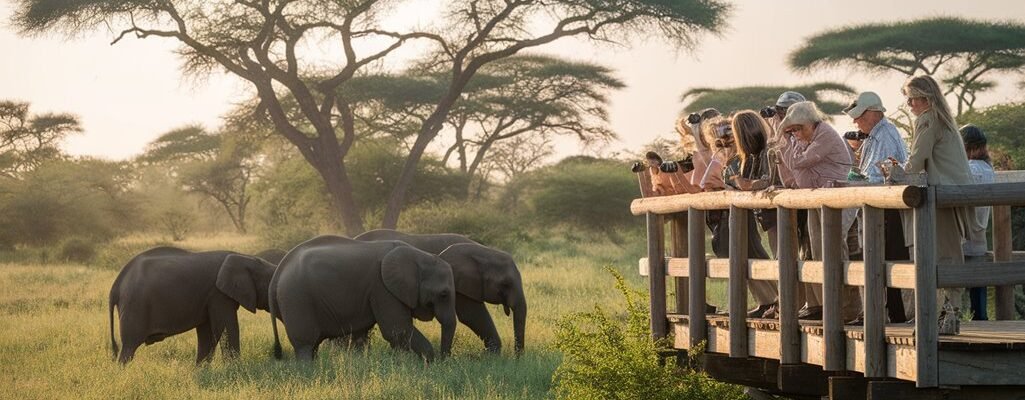
Wildlife Tourism: Observing Animals Responsibly
When you set out to observe wildlife, your actions can have a lasting impact on both the animals and their environment. It’s important to know how to watch without disturbing, to respect boundaries, and to choose tours that prioritize animal welfare. Doing so not only enhances your experience but also helps protect these creatures for generations to come. But what exactly does responsible wildlife observation look like in practice?
Understanding the Impact of Wildlife Tourism
Wildlife tourism offers you a unique chance to connect with nature, but it also comes with significant effects on animals and their habitats. When you visit wildlife areas, your presence can alter animal behavior, sometimes causing stress or disrupting feeding and breeding patterns.
Noise, litter, and habitat trampling from tourists can degrade the environment, affecting not only individual animals but entire ecosystems. Additionally, increased human access may introduce invasive species or diseases.
Understanding these impacts helps you appreciate the delicate balance between enjoying wildlife and preserving it. By recognizing how your actions influence animals and their surroundings, you’re better prepared to minimize harm and support conservation efforts.
Responsible wildlife tourism means staying aware of your role in protecting these natural spaces for future generations.
Choosing Ethical Wildlife Tour Operators
When you book a tour, choosing an operator that prioritizes ethical practices makes all the difference.
Look for companies that emphasize animal welfare, conservation, and local community support. Check if they follow established guidelines for minimizing disturbance to wildlife and habitats. Avoid operators that advertise close contact or feeding, as these often harm animals and encourage unnatural behaviors.
Transparent operators openly share their conservation efforts and collaborate with researchers or local groups. Reviews and certifications from reputable wildlife or tourism organizations can guide your decision.
Guidelines for Observing Animals Safely
Although observing animals in their natural habitats can be thrilling, you need to prioritize safety—for both yourself and the wildlife.
Keep a safe distance to avoid stressing animals or provoking defensive behavior. Use binoculars or zoom lenses to get a closer look without approaching. Move slowly and quietly to minimize disturbance, and avoid sudden movements or loud noises.
Never feed or touch wild animals, as this can harm their health and alter natural behaviors. Stay on designated paths or viewing areas to protect habitats and reduce risks.
Always follow the guide’s instructions if you’re on a tour. Being respectful and cautious ensures you enjoy the experience while keeping both you and the animals safe.
Supporting Conservation Through Tourism
Observing animals responsibly not only protects their well-being but also supports broader conservation efforts.
When you choose eco-friendly tours and local guides, your money directly funds habitat preservation and anti-poaching initiatives. By respecting wildlife and their environments, you help maintain the natural balance that conservationists work hard to protect.
Your tourism dollars can empower communities to prioritize conservation over harmful development. Additionally, spreading awareness about responsible wildlife tourism encourages others to make ethical choices, amplifying conservation impacts.
Remember, your actions influence not just the animals you see but the entire ecosystem. Supporting conservation through tourism means actively contributing to a sustainable future where wildlife thrives and local people benefit economically without compromising nature’s integrity.
You play a vital role in making wildlife tourism a force for good.
Tips for Minimizing Your Environmental Footprint
To minimize your environmental footprint during wildlife tourism, you need to make thoughtful choices that reduce harm to natural habitats.
Stick to marked paths to avoid trampling vegetation and disturbing animals. Use reusable water bottles and avoid single-use plastics to cut down on waste.
Choose eco-friendly accommodations that prioritize sustainability and energy conservation. Travel with small groups to lessen noise and environmental impact.
Avoid feeding or touching wildlife, as this can disrupt their natural behaviors. Support local conservation efforts by booking tours with responsible operators.
Finally, pack out everything you bring in and leave no trace behind.
Conclusion
By observing animals responsibly, you help protect their wellbeing and preserve natural habitats for future generations. Always keep a safe distance, avoid sudden movements, and never feed or touch wildlife. Choose ethical tour operators who prioritize conservation, and be mindful of your environmental impact. When you follow these simple guidelines, you not only enjoy unforgettable wildlife experiences but also contribute to protecting the incredible animals and ecosystems you came to see.




